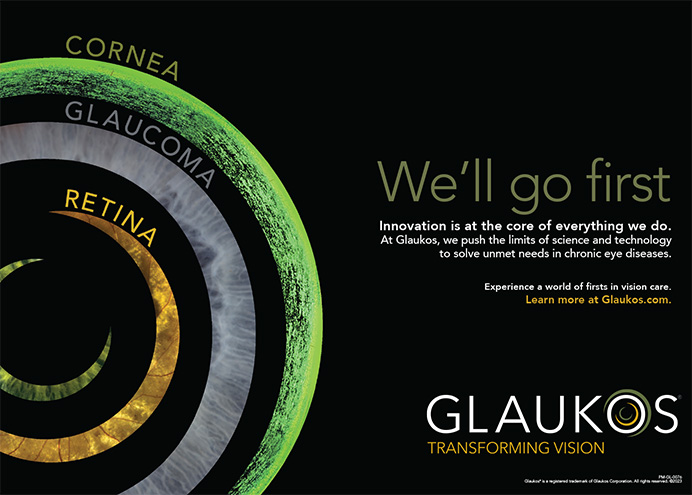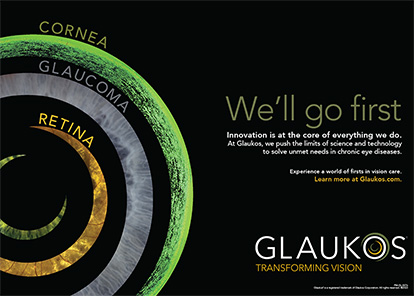Can the specialty’s carbon footprint be reduced?
The United Nations established strategies to reduce greenhouse gas (GHG) emissions, but human-induced global warming continues to threaten global health.1 The health care sector accounts for 4.4% of global emissions.2 In the United States, the health care sector’s climate footprint amounts to about 10% of total GHG emissions.3
As surgical technique and instrumentation evolve to become more efficient, the environmental burden may grow.4 The carbon footprint from the OR alone is an estimated 3,000 to 5,000 tons of CO2 per year.5 The amount of medical waste, moreover, escalated dramatically during the COVID-19 pandemic owing to the increased use of personal protective equipment.6
Ophthalmology is no exception to these trends.7 The popularity of single-use equipment and devices as a means of lowering the risk of infection and reducing postoperative complications has produced an explosion of medical waste. Growing awareness of the problem is spurring initiatives to reuse or resterilize as much equipment and medication as possible (see EyeSustain and ESCRS: Mission Zero).8
EyeSustain
By David F. Chang, MD, and Cassandra L. Thiel, PhD
In 2020, we published the results of the first large survey of ophthalmologists on OR waste.1 The survey was conducted by the Ophthalmic Instrument Cleaning and Sterilization (OICS) Task Force, which has representatives from the ASCRS, AAO, Outpatient Ophthalmic Surgery Society (OOSS), and Canadian Ophthalmological Society. Of the more than 1,000 ophthalmologists who responded, 98% believed that OR waste is excessive, 78% believed that more surgical supplies should be reused, 91% were concerned about climate change, and 87% wanted their medical societies to advocate for reducing the carbon footprint of ophthalmic surgery.
The strong consensus of opinions captured by the survey inspired EyeSustain.org, a web- and app-based resource center for sustainability in ophthalmology. Its development addressed the need to centralize information and resources related to sustainability in ophthalmology. The website was launched on Earth Day during the 2022 ASCRS Annual Meeting.
FIVE OBJECTIVES
The mission of EyeSustain includes five objectives:
No. 1. Engage, network with, and educate the global ophthalmic community about more sustainable practices;
No. 2. Collaborate with industry to reduce ophthalmology’s carbon footprint and surgical waste;
No. 3. Support research and innovative solutions for reducing ophthalmology’s environmental impact;
No. 4. Collaborate with other medical specialties on reducing the carbon footprint of the health care system; and
No. 5. Support advocacy and education about the effects of climate change on public health.
THE WEBSITE
Funded initially by the ASCRS Foundation and developed by an advisory board with expertise on sustainability in health care, the EyeSustain.org website has several major sections. One focuses on reducing OR waste and has an online carbon footprint calculator. Relevant studies and position papers from the OICS task force are archived here. Other sections focus on reducing ophthalmic drug waste, making clinics more sustainable, and sharing global best practices in ophthalmology. Each section has a resource library with references to the peer-reviewed literature that can be used to advocate for change within institutions and facilities.
Surgical manufacturers have been invited to share their waste-reducing initiatives in a section dedicated to industry collaboration on making surgery more sustainable. Another section provides pertinent information on the effects of climate change on public health.
COLLABORATION
The ESCRS and AAO joined ASCRS as cosponsors of EyeSustain.org after its launch (see ESCRS: Mission Zero on the following page). The goal of this partnership is to develop a global coalition of ophthalmic organizations, societies, and their members who are committed to promoting the sustainability of eye care through advocacy, collaboration, and education. Each member society will incorporate sustainability into its educational programs, designate representatives to a global EyeSustain council, and establish a committee on sustainability to engage interested members. For instance, these efforts were on display at the 40th Congress of the ESCRS in September 2022 (click here).
An example of the power of collaboration is the OICS task force position paper on topical drug waste in ophthalmic surgery.2 Endorsed by the ASCRS, AAO, OOSS, and American Glaucoma Society, the document was released and posted on EyeSustain.org in April 2022. The evidence-based paper documents the policies of multiple regulatory and accreditation agencies and clarifies that multidose bottles may be used on multiple patients and until the labeled date of expiration.
In our OICS survey, 98% of respondents expressed a willingness to use multidose bottles on multiple patients, but less than half of them were currently doing so.1 The respondents who were practicing in hospitals were far less likely to reuse the bottles than those operating in ambulatory surgery centers.3 A separate unpublished OOSS survey, however, found that 88% of ambulatory surgery centers discarded multidose topical drug bottles at the end of the day, week, or month.
After meeting with the OICS task force, CMS issued a clarification to its surveyors that topical drops are not subject to the 28-day expiration policy that applies to injectable medications. The OICS position paper also recommends that surgical patients requiring a topical medication not used for other patients be allowed to bring that partially used medication home for postoperative use.2
CONCLUSION
EyeSustain.org makes it easy to locate and share resources such as multisociety position papers with the global community. The aim is to help ophthalmologists around the world effect policy change within their own institutions.
1. Chang DF, Thiel CL; Ophthalmic Instrument Cleaning and Sterilization Task Force. Survey of cataract surgeons’ and nurses’ attitudes toward operating room waste. J Cataract Refract Surg. 2020;46(7):933-940.
2. Palmer DJ, Robin AL, McCabe CM, Chang DF; Ophthalmic Instrument Cleaning and Sterilization Task Force. Reducing topical drug waste in ophthalmic surgery: multisociety position paper. J Cataract Refract Surg. 2022;48(9):1073-1077.
3. Thiel CL, Zhang J, Chang DF. Differences in reuse of cataract surgical supplies and pharmaceuticals based on type of surgical facility. J Cataract Refract Surg. 2022;48(9):1092-1094.
ESCRS: MISSION ZERO
By Oliver Findl, MD, MBA
In 2022, the ESCRS committed to integrating social and environmental sustainability into its community, meetings, events, and activities. With the help of the Global Destination Sustainability Movement, a group of international sustainability experts, the congress developed a 2-year sustainability strategy to meet its goals, which are to inspire its members to improve the environmental and social sustainability of ophthalmic health care and to lead by example by innovating and improving the sustainability of its operations and practices.
A SUSTAINABLE EVENTS STRATEGY
The ESCRS established Mission Zero to achieve net-zero carbon emissions and produce zero waste to landfills from its meetings. The ESCRS selects venues that have a strong commitment to sustainability and environmentally friendly practices, such as the use of renewable energy sources, waste reduction and recycling programs, and environmentally friendly products.
The 2022 ESCRS Annual Meeting in Milan was the pilot project for Mission Zero. ESCRS executives worked with the Global Destination Sustainability Movement to design waste out of the meeting. Tactics included the use of more sustainable materials and a high-performance recycling system (Figure 1) and water bottle refill stations placed throughout the Allianz Milano Convention Centre. All attendees were offered a reusable water bottle to reduce plastic waste. The ESCRS also worked with the convention center’s catering team to provide healthier and climate-friendlier food and drink options (see Sustainable Catering).
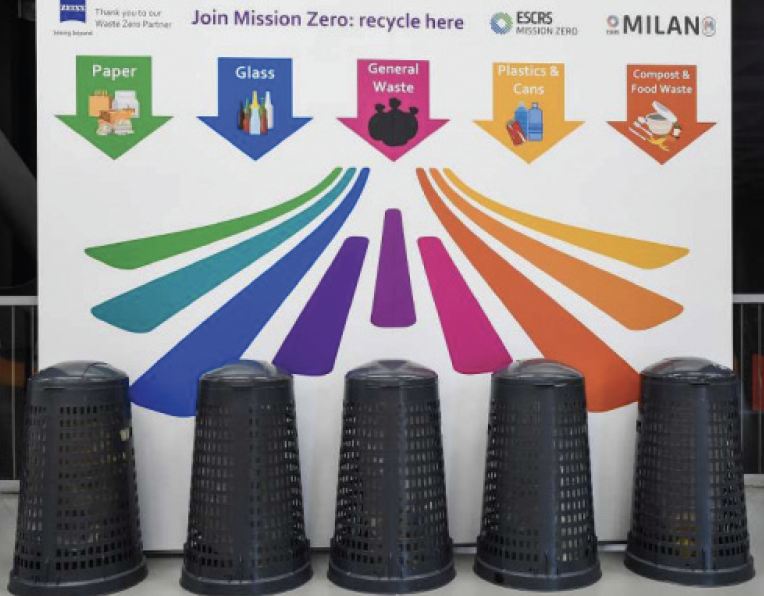
Figure 1. At the 2022 ESCRS Annual Meeting, food was separated into five containers for paper, glass, general waste, plastic and cans, and compost and food waste.
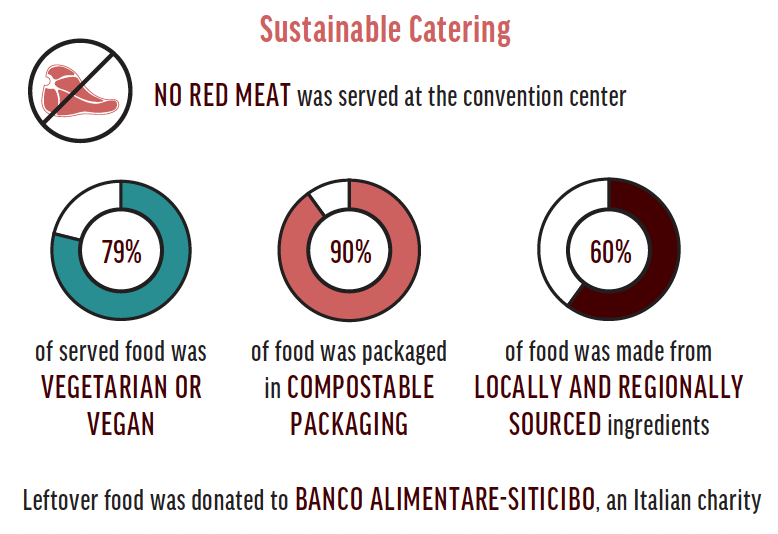
Unavoidable emissions were offset by investing in three carbon offset projects that provide clean and safe cooking and water systems to isolated communities, increase well-being and health by reducing smoke inhalation and air pollution, and provide renewable energy solutions that protect the local environment in developing economies.
ADDITIONAL EFFORTS
EyeSustain. The ESCRS is partnering with the AAO and ASCRS on EyeSustain, a global coalition of eye societies and ophthalmologists collaborating to make ophthalmic care and surgery more sustainable. EyeSustain works to engage, network with, and educate the global ophthalmic community about more sustainable practices; collaborate with industry to reduce its carbon footprint and surgical waste (Figure 2); and support research and innovative solutions that reduce ophthalmology’s environmental impact.

Figure 2. Marking pens, bottles of balanced salt solution, needle containers, and unfinished drug bottles are common objects in ophthalmology ORs.
Courtesy of Till Findl
Young Ophthalmologists for Sustainability. The ESCRS formed this group for young ophthalmologists who are enthusiastic about sustainability.
CONCLUSION
Sustainability can be achieved only by working together. It is up to each of us to find ways to influence and encourage those with power to make sustainable changes. The ESCRS’ commitment to sustainability is a key part of its vision for the future—our goal in 2023 is to make the annual meeting completely carbon neutral. By reducing its carbon footprint, promoting sustainability, and offsetting carbon emissions, the ESCRS hopes to lead the charge in the ophthalmology community.
SURGICAL WASTE TODAY
Surgical waste can accumulate quickly and is often collected before the surgical day concludes (Figure 1).
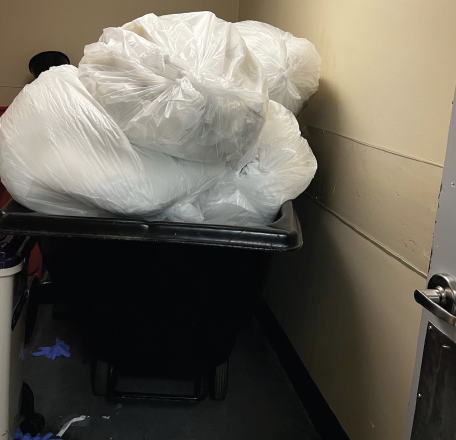
Figure 1. Surgical waste accruing before noon on a routine surgery day.
Some medical equipment, including syringes, needles, tips, and empty IOL cartridges, is designed for single use. Gonioscopy lenses and applanation tonometer prisms used to be reusable, but nearly all of those currently manufactured are disposable, increasing plastic waste and health care costs.9 Some disposable gonioscopy lenses have been investigated to see if they cause any deleterious effects or influence patient outcomes when compared to those that are reusable.10 It was concluded that there are no differences in efficacy in reducing IOP when disposable or reusable lenses are used, suggesting that reusable lenses may be an environmentally friendly option.
Many commonly used tools can be reused but are not. For example, marking pens may be used repeatedly but are often disposed of after making a single mark (Figure 2). Needle containers can hold up to 20 needles but are disposed of after each surgical case, as are partially filled containers of dilating drops and balanced salt solution (Figure 2).
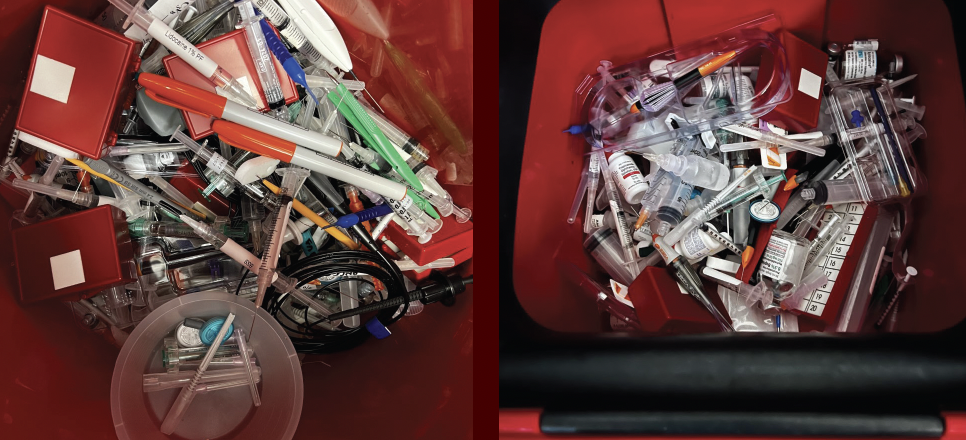
Figure 2. One day’s worth of surgical waste from the Hanusch Eye Clinic in Vienna.
The amount of surgical waste is greater in the United States than in some other countries. In one study, approximately 1 kg more waste was generated per trabeculectomy at an eye care facility in Baltimore compared to one in India.11 This is interesting because India has far fewer regulations governing the use and disposability of surgical equipment. Moreover, the rate of endophthalmitis reported following phacoemulsification was lower in India than in the United States (0.01% vs 0.04%).12
STRATEGIES AND RECOMMENDATIONS
No. 1: Analyze the waste. One strategy for reducing OR waste and ophthalmology’s carbon footprint is to separate waste from recyclable material.13
No. 2: Reconsider regulations. Eye care providers, health care administrators, and manufacturers can reevaluate the benefits and drawbacks of strict regulations on products for which the risks of contamination are not well studied. The theoretical adverse effects of reusing eye drops, gonioscopy lenses, and tonometer prisms are not equivalent to the measurable financial and environmental burden of the waste produced.14 Efforts at reducing environmental costs without sacrificing surgical technique and increasing postoperative complications have shown great promise in several countries, creating an opportunity for a shift in others, including the United States.11
No. 3: Improve education. Studies have found that trainee surgeons generate almost 25% more waste than experienced surgeons. Efforts to reduce GHG emissions could be augmented through waste reduction education starting at the trainee level.15
No. 4: Conduct research to inform action. There is a dearth of research on the environmental impact of surgical waste in ophthalmology. Studies should be designed to trial different approaches to waste reduction.
1. Working Group II. Climate change 2022: impacts, adaptation, and vulnerability. summary for policymakers. IPCC. Accessed December 22, 2022. www.ipcc.ch/report/ar6/wg2/
2. Lenzen M, Malik A, Li M, et al. The environmental footprint of health care: a global assessment. Lancet Planet Health. 2020;4(7):e271-e279.
3. Eckelman MJ, Sherman J. Environmental impacts of the U.S. health care system and effects on public health. PLoS One. 2016;11(6):e0157014.
4. Pradere B, Mallet R, de La Taille A, et al; Sustainability Task Force of the French Association of Urology. Climate-smart actions in the operating theatre for improving sustainability practices: a systematic review. Eur Urol. Published online February 9, 2022. doi: 10.1016/j.eururo.2022.01.027
5. MacNeill AJ, Lillywhite R, Brown CJ. The impact of surgery on global climate: a carbon footprinting study of operating theatres in three health systems. Lancet Planet Health. 2017;1(9):e381-e388.
6. Sarkodie SA, Owusu PA. Impact of COVID-19 pandemic on waste management. Environ Dev Sustain. 2021;23(5):7951-7960.
7. Palmer DJ, Robin AL, McCabe CM, Chang DF; Ophthalmic Instrument Cleaning and Sterilization Task Force. Reducing topical drug waste in ophthalmic surgery: multisociety position paper. J Cataract Refract Surg. 2022;48(9):1073-1077.
8. Roach L. Support grows for minimizing OR waste. EyeNet Magazine. September 2020. Accessed January 8, 2023. https://www.aao.org/eyenet/article/support-grows-for-minimizing-or-waste
9. Park EA, LaMattina KC. Economic and environmental impact of single-use plastics at a large ophthalmology outpatient service. J Glaucoma. 2020;29(12):1179-1183.
10. Oydanich M, Kass W, Khouri AS. Laser induced damage to disposable gonioscopy lenses during selective laser trabeculoplasty. J Glaucoma. 2022;31(7):e46-e48.
11. Namburar S, Pillai M, Varghese G, Thiel C, Robin AL. Waste generated during glaucoma surgery: a comparison of two global facilities. Am J Ophthalmol Case Rep. 2018;12:87-90.
12. Pershing S, Lum F, Hsu S, et al. Endophthalmitis after cataract surgery in the United States: a report from the Intelligent Research in Sight Registry, 2013-2017. Ophthalmology. 2020;127(2):151-158.
13. Buchan JC, Thiel CL, Steyn A, et al. Addressing the environmental sustainability of eye health-care delivery: a scoping review. Lancet Planet Health. 2022;6(6):e524-e534.
14. Tauber J, Chinwuba I, Kleyn D, Rothschild M, Kahn J, Thiel CL. Quantification of the cost and potential environmental effects of unused pharmaceutical products in cataract surgery. JAMA Ophthalmol. 2019;137(10):1156-1163.
15. Khor HG, Cho I, Lee KRCK, Chieng LL. Waste production from phacoemulsification surgery. J Cataract Refract Surg. 2020;46(2):215-221.



